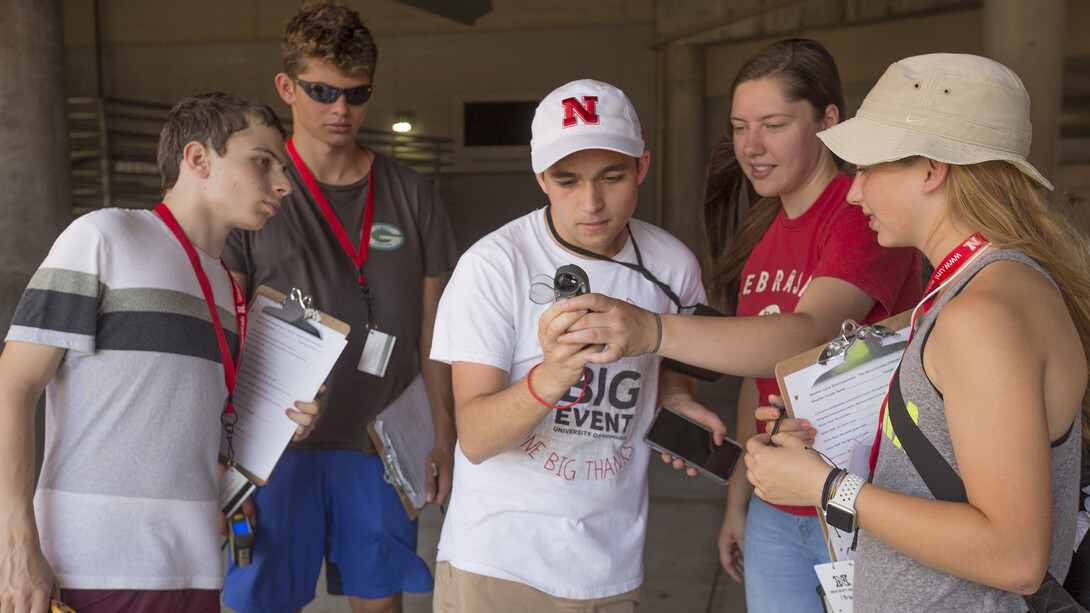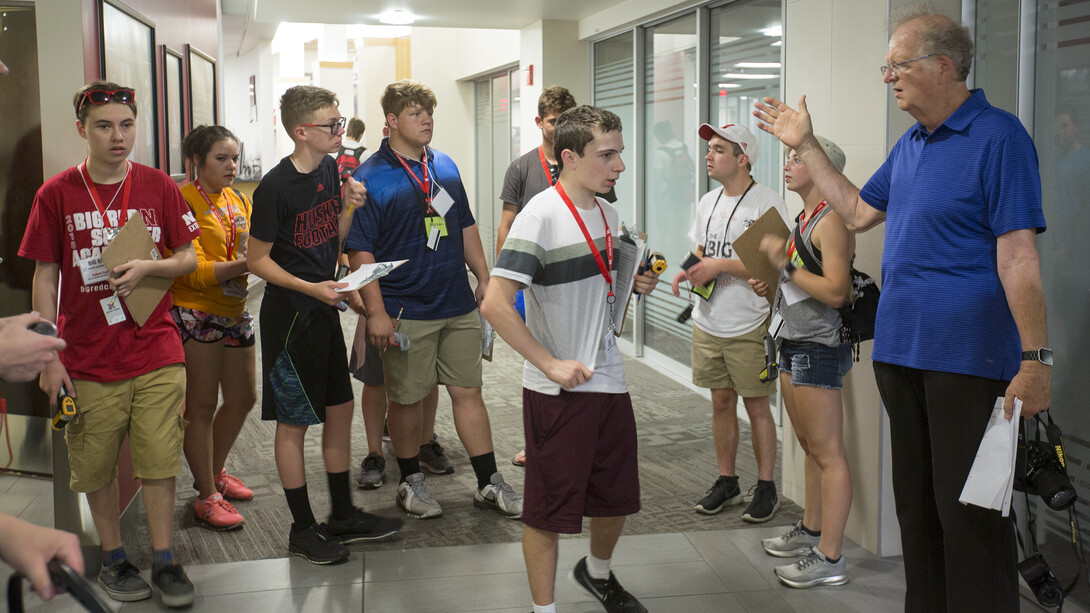
As a teen, studying weather phenomena was appealing to Maddy Diedrichsen, but she had no idea where or how to start — until she arrived at the University of Nebraska–Lincoln’s national weather camp.
Diedrichsen was a high school sophomore when she first attended weather camp, but she credits the camp with jumpstarting her undergraduate research career.
“Seeing all of the opportunities — that was a big thing for me. It really gave me a trajectory,” she said. “I made a lot of connections with people here. I realized I had a huge opportunity to do research as an undergrad.”
Diedrichsen is now preparing for her junior year at Nebraska, majoring in meteorology-climatology and mathematics, and was recently named a NOAA Holland Undergraduate Scholar. She’s also taken on the role of lead instructor at weather camp.
“I love to see the passion come from these high school students, and it’s great to share my passion and help them at the same time,” she said June 14 while leading a group of campers through Memorial Stadium to perform experiments on microclimates.

The tour and experiments at the stadium are a yearly tradition. The stadium provides an excellent spot to take various temperature measurements, and it’s a place most visitors to campus want to see, said camp director Ken Dewey, a climatologist and a professor in the Department of Geography at Nebraska.
Diedrichsen said the students were asked to hypothesize on temperatures of various microclimates inside the stadium. They expected it to be hot, but not as hot as the 120-plus degree readings they got.
Nebraska’s weather camp, which is part of the national weather camp program, attracts students from all over the United States. The high-school aged campers spend five days on campus running experiments, taking field trips to places like Offutt Air Force Base, and learning from top meteorology and climatology scholars. The 2018 camp ends June 15.
The overarching goal of the camp, Dewey said, is to showcase the diverse possibilities for anyone who wants to pursue weather and climate-related careers, from national defense to international research.
Also, Dewey wants high school students to be excited about life after high school.
“I think juniors and seniors sometimes hit a wall in their studies, they get bored,” he said. “Then they come to a camp like this and they get engaged and meet other students like themselves and are ready to go back, finish high school and move on to college.”

Dewey said the camp is popular and spaces fill very quickly. This year’s camp brought 16 campers from seven different states. One of those was Ethan Greenberg, of Beverly Hills, California. Greenberg said Nebraska’s weather camp has a good reputation and he was excited to see the university’s meteorology-climatology program up close.
“I researched all the (weather) camps and Nebraska had great reviews, and a strong program,” he said. “I really like the campus, too.”
Now in its eighth year, Dewey is continuously tweaking the camp to include the most informative sessions, tours and experiments.
“Every year I go back and think about how meaningful each experience was for the students,” he said. “I’ve rotated some things out and tried new things each year.”







